Resignation letter template ontario
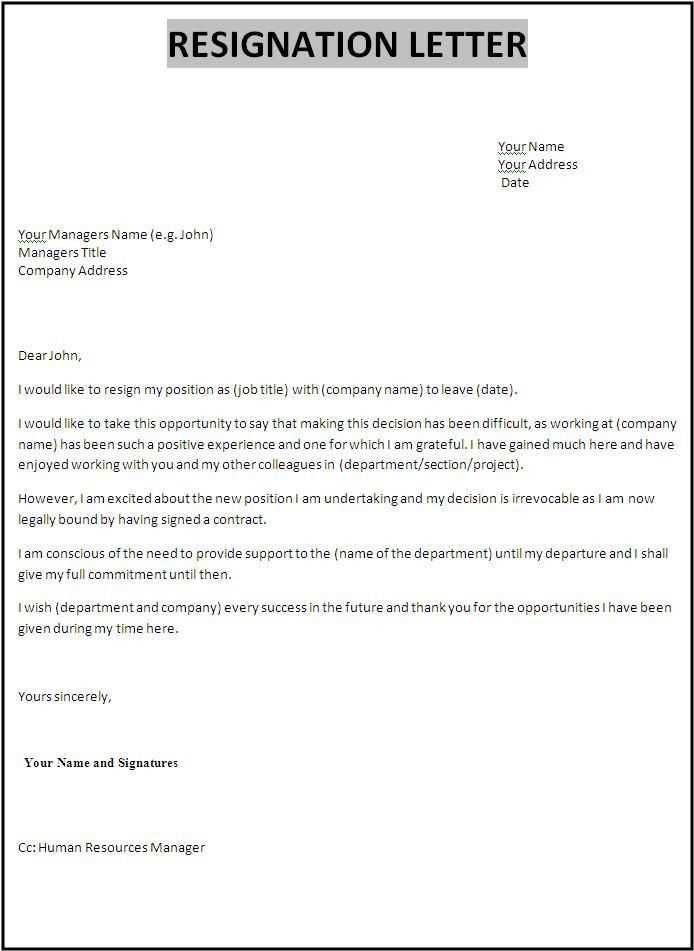
If you’re planning to resign from your job in Ontario, drafting a clear and professional resignation letter is a key first step. This letter formally communicates your decision and helps maintain positive relationships with your employer. A well-written resignation letter can leave a lasting, professional impression and ensure a smooth transition for both you and your employer.
Start by addressing your supervisor or manager directly. Begin with a brief statement expressing your intention to resign and include your final working day. Be concise and respectful in your tone. You don’t need to go into unnecessary details about your reasons for leaving, but a simple explanation is often appreciated.
Next, express your gratitude for the opportunities you’ve had during your time with the company. This demonstrates your professionalism and keeps the door open for potential future opportunities or references. Offer your assistance in the transition process, whether it’s training a replacement or wrapping up pending projects.
End the letter by reaffirming your appreciation and wishing the company continued success. Keep the letter short and to the point while maintaining a respectful and professional tone throughout. Here’s a basic structure that can be customized to your situation.
Resignation Letter Template Ontario
In Ontario, your resignation letter should be straightforward and polite. The key is to keep it brief and professional. Make sure to clearly state your intention to resign, the date of your last working day, and express gratitude for the opportunity to work with the company. Below is a template that you can follow.
| Component | Details |
|---|---|
| Header | Include your name, address, and the date at the top of the letter. |
| Recipient’s Information | Write the recipient’s name, job title, and company address. |
| Subject | “Resignation – [Your Name]” |
| Opening | State that you are resigning from your position, mention the position title, and provide the effective resignation date (usually two weeks’ notice is standard in Ontario). |
| Body | Thank your employer for the opportunities and experiences gained during your tenure. Express any positive sentiments, but keep the tone professional. |
| Closing | Offer assistance in the transition period, if applicable, and express your desire to keep in touch. |
| Signature | Close the letter with “Sincerely,” followed by your signature and printed name. |
This template will help ensure your resignation is handled in a professional manner, leaving a positive impression with your employer. Avoid mentioning negative reasons for leaving, as it’s best to maintain a neutral and respectful tone throughout the letter.
Steps to Start Your Resignation Letter
Begin your resignation letter with a clear and direct statement. Specify your intention to resign and mention the exact date you plan to leave. This helps avoid any confusion and sets the tone for the rest of the letter.
Follow with a polite and brief explanation of your decision, if appropriate. Acknowledge any positive experiences or express appreciation for the opportunities you had, keeping the tone professional and respectful.
If possible, include a commitment to assist with the transition process, whether it’s training a replacement or completing ongoing projects. This shows professionalism and leaves a positive impression.
How to State Your Last Working Day Clearly
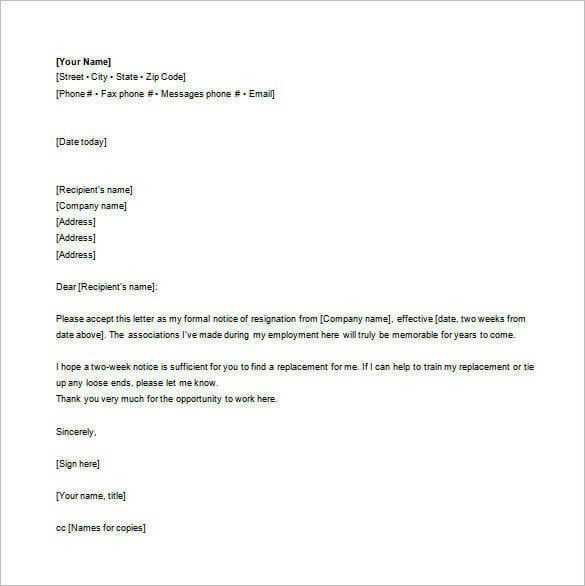
Be direct and concise. Begin your resignation letter by clearly stating the date of your last working day. This should be a specific calendar date, not a vague time frame. For example, “My last working day will be Friday, March 15th, 2025.” Avoid any ambiguity that could cause confusion.
Ensure you allow sufficient time for transition. A typical notice period is two weeks, but check your employment contract for any specific requirements. If you’re required to give a different amount of notice, make sure to adhere to that timeline.
If applicable, mention your willingness to assist with the handover process, ensuring a smooth transition. You might say, “I am happy to help train my replacement or assist in any way during the remaining time.” Keep the tone friendly but professional.
Confirm the final date one last time at the end of your letter to avoid any misunderstandings. For example, you could conclude with: “I look forward to finishing my duties by March 15th and assisting with the transition as needed.” This final confirmation leaves no room for confusion.
What to Include for a Professional Tone
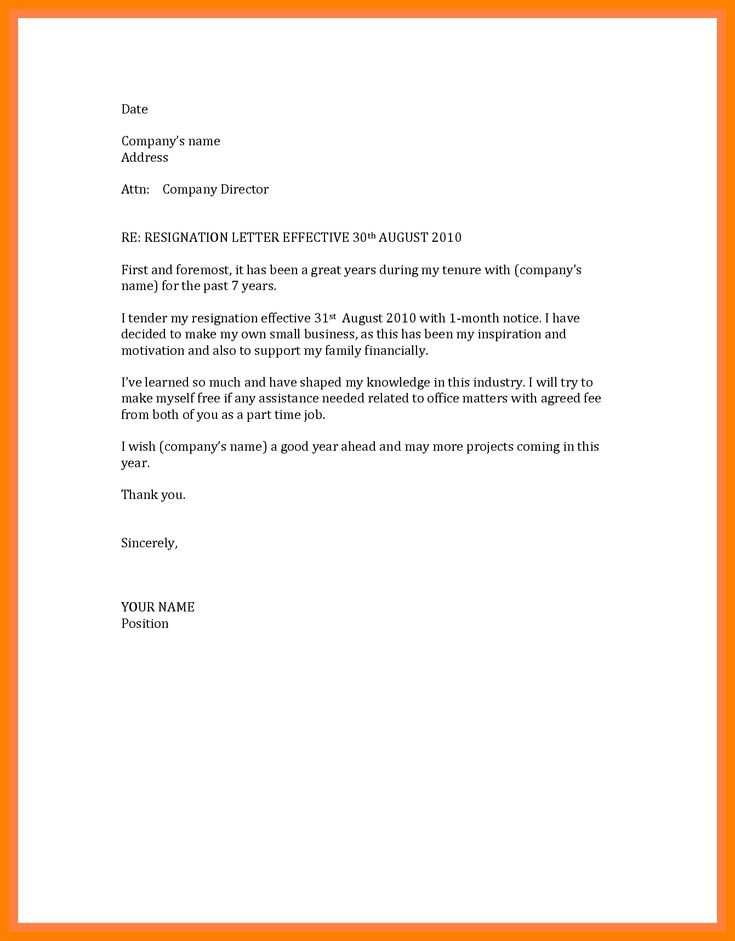
Keep your resignation letter concise, direct, and courteous. Start by clearly stating your intention to resign and provide the date your resignation will take effect. This eliminates ambiguity and sets clear expectations. Acknowledge the positive aspects of your experience at the company and express gratitude for the opportunity to contribute. This helps maintain a respectful tone even if your departure is due to negative reasons.
Provide Transition Support
Offer to assist with the transition, such as helping to train a replacement or finishing pending tasks. This shows you remain committed to your work until the last day and leave on good terms.
Use Polite Language
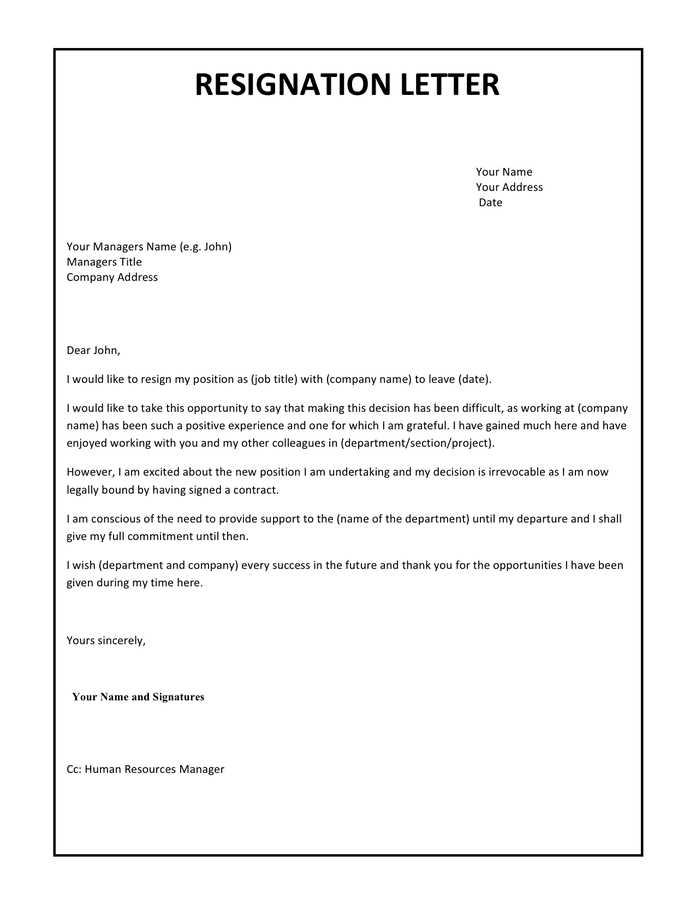
Even if you’re leaving because of negative circumstances, avoid negative language or complaints. Maintain professionalism by keeping the tone positive, focusing on future opportunities instead of dissatisfaction with the present role.
How to Handle the Reason for Resigning
Be clear and direct about your reason for leaving. Avoid making your explanation sound negative or personal. Focus on the professional aspects of your decision, such as a new opportunity, career growth, or changes in personal circumstances that require a shift in your priorities.
Keep It Short and Professional
There’s no need to go into excessive detail. Simply state the reason briefly and move on. If your reason is personal or sensitive, it’s okay to keep it general, like “personal reasons” or “seeking a new direction.” The goal is to maintain a positive relationship with your employer.
Avoid Criticizing the Company or Colleagues
Never use your resignation letter to vent frustrations. Criticizing management, colleagues, or company policies can create unnecessary tension. It’s important to maintain a level of professionalism that will leave the door open for future opportunities or references.
If you feel the need to provide more context, consider having a one-on-one conversation with your supervisor rather than including lengthy explanations in the resignation letter.
Tips for Addressing Your Supervisor and Company
Maintain professionalism, but keep the tone respectful and clear. Directly address your supervisor by their formal title (Mr., Mrs., Dr.) and last name, unless you have a more casual relationship. This sets a respectful tone from the start.
Addressing Your Supervisor
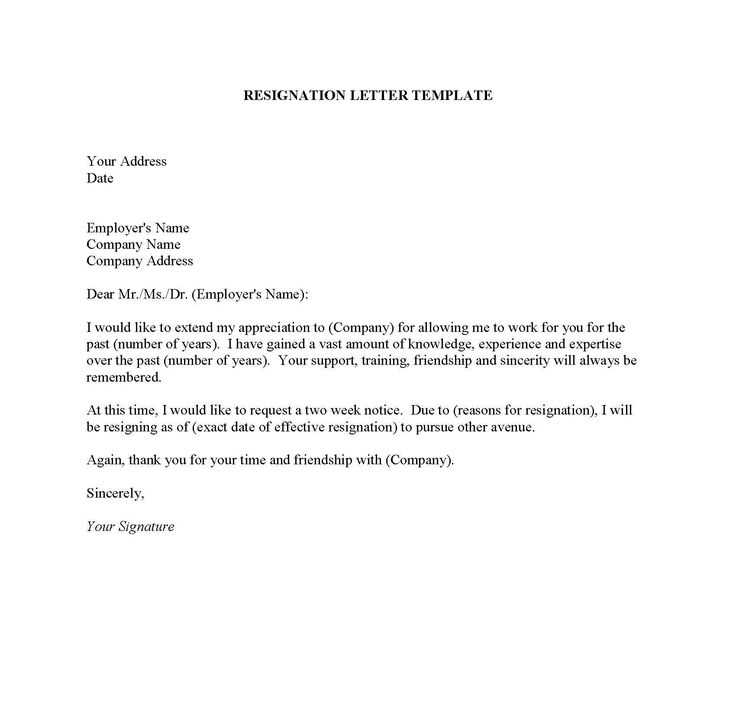
- Use a professional greeting: “Dear [Supervisor’s Last Name].”
- Clearly state your intention: Whether you’re resigning or requesting a meeting, keep it straightforward and polite.
- Avoid any negative language. Focus on positive aspects of your experience to maintain a good relationship.
Addressing the Company
- In the closing paragraph, express gratitude for the opportunities provided during your tenure.
- If you are addressing a group or the company as a whole, use “To Whom It May Concern” or “Dear [Company Name] Team.”
- Keep your tone professional and avoid venting frustrations or personal issues. You want to leave on good terms.
What to Avoid in Your Resignation Letter
Stay away from negative language. Avoid complaining about your job, coworkers, or the company. A resignation letter should remain professional and respectful, even if your experience wasn’t ideal. Keep the tone neutral and avoid airing grievances.
Don’t Include Unnecessary Details
There’s no need to explain the specifics of why you’re leaving unless it directly impacts your relationship with the company. Keep it brief and focus on your decision to move forward. Mentioning personal conflicts or frustrations can leave a negative impression.
Don’t Forget to Offer Transition Help
Leaving on a positive note is essential. Make sure to offer assistance during the transition period. Even if you’re leaving on short notice, show willingness to help with handover tasks or train a replacement. This gesture demonstrates professionalism.